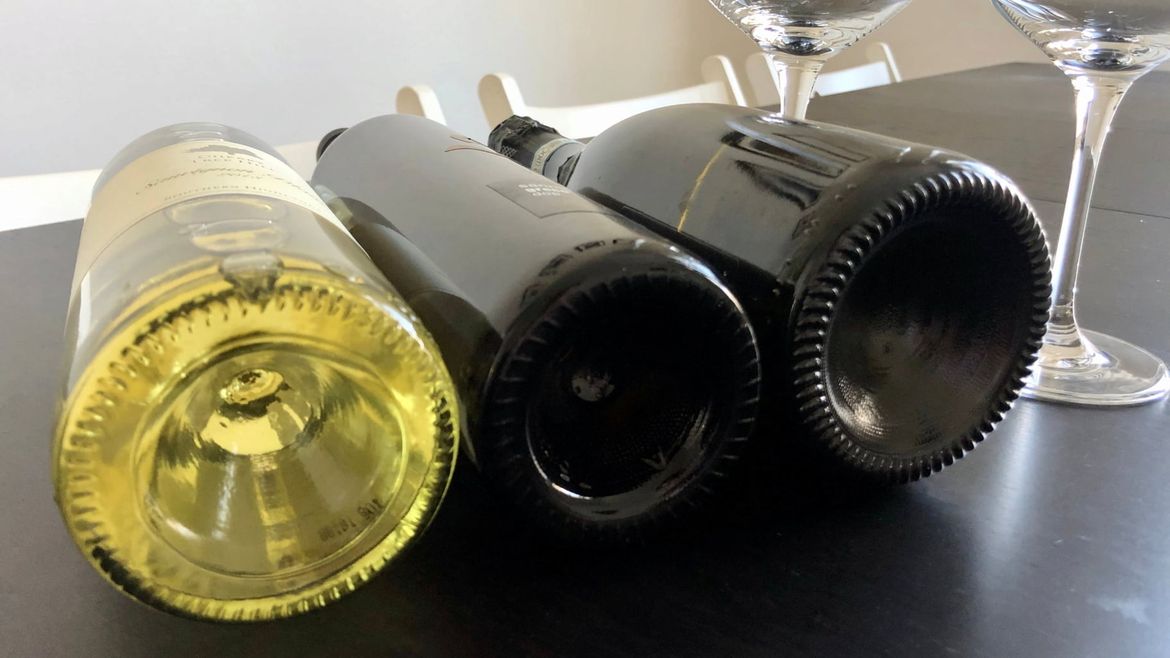Why Wine And Champagne Bottles Have A Convex Base
Four myths - one truth
Four Myths About the Bottle Base – and What’s Really True
Almost everyone recognises the indentation at the bottom of a wine or sparkling wine bottle – yet few know its actual purpose. Over the centuries, numerous theories have emerged. Here’s a look at the four most common myths:
- 1. The indent makes pouring easier
- 2. To fake more content
- 3. So the deposit can settle
- 4: For more stability
Let's take a closer look:
- 1. The indent makes pouring easier
Some suspect that the indent exists to make pouring easier, in particular to allow waiters to steady the bottle. While this may look elegant, be practical and sound like a reasonable explanation, it's not the real reason for the curved bottom of the bottle.
- 2. To fake more content
Others claim the dented bottom was designed to trick consumers into believing there was more wine inside. That doesn't sound too far-fetched either, but it's still just a myth. The label indicates the wine's contents, and that volume must be contained inside the bottle.
- 3. So the deposit can settle
Another myth: the curvature allows the sediment to settle better. This is partly true because colour and tannins settle in the hollow, especially in mature red wines. This helps to reduce the amount of sediment in the glass when pouring – practical, but not the main reason.
- 4. For more stability
There is some truth to this theory. In the past, when bottles were still mouth-blown, the base was usually uneven. Pressing it inwards gave the bottles more stability. This still ensures a secure footing today, but it is only a side effect of the curvature.
The real reason for the curved base
The actual purpose is to balance pressure. The curved base is essential, especially when it comes to sparkling wines. The carbon dioxide creates high internal pressure. The curve helps to distribute this pressure evenly across the glass walls, preventing the base from breaking. Without the characteristic curve, sparkling wine bottles would simply not be stable enough to withstand the pressure.
Why do wine bottles also have a curve?
Still wines do not contain carbon dioxide pressure, but the curve still provides stability. When the cork is inserted, high pressure is created for a short time, which the bottle can withstand better thanks to its curved base. The shape also adds visual elegance – a beautiful detail that has been a feature of wine bottles for centuries.
And especially for champagne, the finest of all sparkling wines, a flat bottom would be unthinkable. The enormous pressure demands the highest perfection – and that starts with the shape of the bottle.
Frequently asked questions about the curved bottle bottom
Why do wine bottles have a curved base?
To enhance the bottle’s stability and resistance to internal pressure when corked, especially for sparkling wines.
What is the name of the hollow in the bottle base?
In French, it is called ‘Culot de Bouteille’, in English ‘Punt’
You might also be interested in these posts
Where do the bubbles in champagne come from?
Latest reviews
-
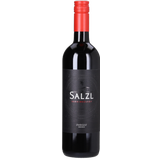 4.5 (4)
4.5 (4)Salzl Zweigelt Reserve 2021, 0,75 L
- Matured for 12 months in barriques
- Fruity, juicy, accessible
- Exceptional red wine at an unbeatable price
CHF 13.60 (CHF 18.13 / L)Delivery by December 22
-
-
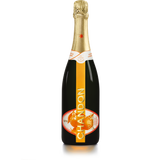 4.8 (77)
4.8 (77)CHANDON Garden Spritz 11.5% Vol., 0,75 L
- Ready-to-serve aperitif
- With fine bitter orange liqueur
- Cuvée of Chardonnay, Pinot Noir & Sémillon
CHF 22.00 (CHF 29.33 / L)Delivery by December 22
-
-
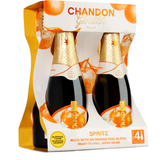 4.7 (28)
4.7 (28)CHANDON Garden Spritz - Pack of 4, 0,75 L
-3%- Ready-to-serve premium aperitif in a pack of 4
- Cuvée of Chardonnay, Pinot Noir & Sémillon
- With fine bitter orange liqueur
CHF 20.38 CHF 21.00 (CHF 27.17 / L)Delivery by December 22
-
-
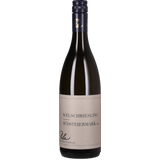 5.0 (1)
5.0 (1)Polz Welschriesling Südsteiermark DAC 2024, 0,75 L
- Fresh, light white wine
- Very clean and aromatic
- Dry, easy-drinking summer wine
CHF 10.35 (CHF 13.80 / L)Sold out
-
Magazine Articles:
-
Switzerland: Free standard delivery from CHF 80.00
-
We operate in a
climate-conscious manner. Secure payments
with SSL encryption technology


